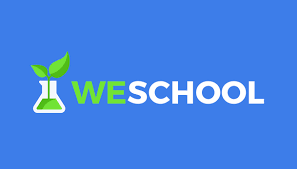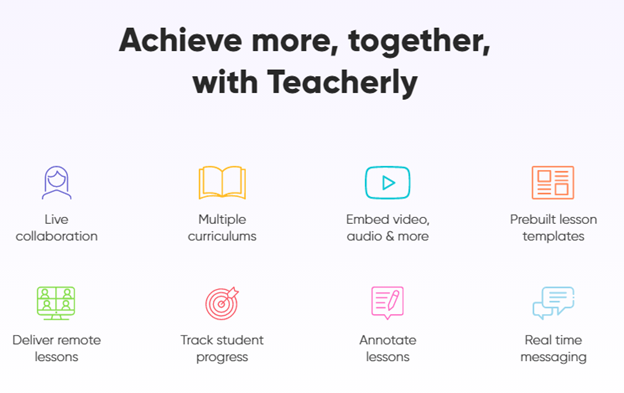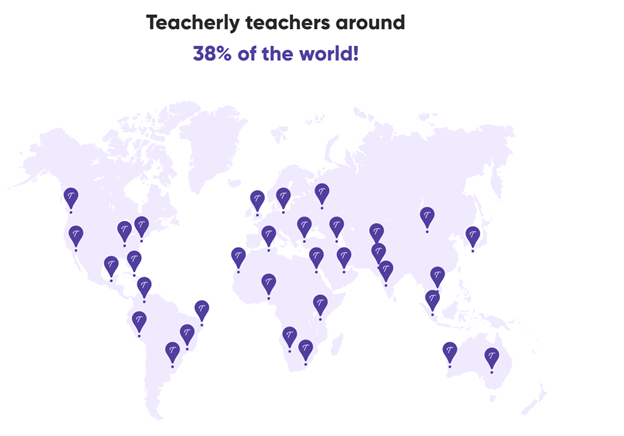This article is part of a series and has been written by the Master’s students in Global Politics and Society at the University of Milan. As attending students of “The Welfare States and Innovation” course, they explored the connection between Social Innovation and new forms of Welfare in contemporary societies. The article highlights the development of new synergistic partnerships among actors involved in multi-stakeholder networks and innovative multi-level governance models for social policies. Here are the first, the third and the fourth articles of the series.
The pandemic challenged traditional education systems and new start-ups introduced innovative solutions. Can this challenge be an opportunity? In the following article, we will discuss the role of Digital Social Innovation in the field of education. In the light of Covid-19 challenges and opportunities for educational innovation, we will focus on two European start-ups: WeSchool and Teacherly.
Pandemic and technological development: one leads to another
Throughout the pandemic, the world faced a situation of increasing emergency by which each country has faced closures and lockdowns, damaging economies and balances in societies, in which pre-existing and new problems have come to light in every sector of life, in both more and less developed countries (ILO et al. 2020; D’Autilia 2020).
The emergency forced technology adoption behaviours (George et al. 2020, 1755), pushing the technological frontiers even further, leading to the introduction of the term Digital Social Innovation (DSI) which is generally described as a tool that allows people to interact and collaborate using digital technologies and creating knowledge; proposing alternatives in order to push technology to have a strong social impact; possibly changing how our public services work, reviving civic life, and permitting citizens to become immediate members in handling social challenges (Cangiano et al. 2017; Hamburg & Bucksch 2017; Digital Social Innovation EU).
Prior to the crisis, existing literature already revealed the significant presence of projects mapped by the European DSI project, DSI4EU’s Skills and Learning Cluster by Fab Lab Barcelona, focused on education and skills, as a suitable means for developing a new educational model which is open, accessible, and inclusive (Schön et al. 2017; Digital Social Innovation EU).
Over 91% of students worldwide, about 1.6 billion (Miks & McIlwaine 2020), have been impacted by the pandemic; consequently, the world is tackling the problem in different ways, online and offline, taking actions that cause discomfort and school closures. Therefore, it is not only the economy that has been largely affected.
Thus, we decided to consider DSI in the field of education as one of the core principles of society, and as a phenomenon we are experiencing. We have chosen two European startups to represent the scope of DSI, comprising two of the five countries most affected by Covid in Europe (Statista 2021): WeSchool, an Italian project born in 2016 by Marco De Rossi, and Teacherly, an English start-up founded in 2014 by Atif Mahmood.
WeSchool: digital education based on involvement and interaction

The purpose of the initiative
WeSchool introduced a digital platform entirely dedicated to e-learning, with the aim of involving students and teachers without necessarily being physically close. The project was founded in 2004 under the name of Oilproject to offer support to students, making available online teaching material. Later the project evolved into WeSchool in 2016 to introduce the platform in schools to make them more technological, innovative, and fun, and to integrate digital material and tools into traditional frontal lessons. The pandemic has fostered its success and spread.
Further developments in the aftermath of Covid-19
To ensure equal access to Italian students, WeSchool decided to offer its services free of charge to middle and high schools; refresher courses designed for teachers as well as those for companies that provide training for their employees remained available upon payment. The platform use is simple and intuitive, and this can help to reduce the occurrence of problems related to the digital divide that exists among students or teachers.
The digital platform alone was not enough, however. Even though a personal computer or a smartphone (connected to the internet) is sufficient to access WeSchool, not every student has the adequate tools to do so. In this regard, the Italian government intervention was crucial: in the Decree called “Cura Italia” the former Minister of Education, Lucia Azzolina, allocated 85 million euros to allow for the enhancement of distance learning, of which 70 million were devoted to providing digital devices to less well-off students.
The students at the core of the learning process
WeSchool provides a virtual school where each teacher can create its own classroom and invite students, and where teachers and students can easily consult all material and documents available on the web, including those provided by other platforms (such as YouTube and Google) while remaining in the classroom.
The innovations introduced in education are not exclusively technical, but they are also conceptual: lessons now put the student at the center of the learning process. It follows that traditional lectures were enriched by new elements: now, students can study autonomously at home before the lesson, and then dedicate the time spent in class to clarifications and discussions, presenting the results of their projects to classmates after exploring a topic. Teachers can monitor how many students understand a topic by using a digital tool in real-time: they can “launch an instant,” that is, an exercise aimed at verifying the student’s level of learning.
Finally, the teachers evaluate the level of learning achieved by the students using more traditional (virtual) methods such as true or false quizzes, open answer or multiple-choice tests, or by choosing new methods such as a video quiz or an answer with attachment.
The main goals of distance learning organized in this way are to reduce the negative effects of social distancing such as loneliness and isolation, focusing attention on the development of soft skills such as working in groups and public speaking, and increasing the level of interaction between teachers and students using WeSchool, not only during the lessons but also before and after class.
The numbers of WeSchool
WeSchool’s virtual classroom has helped keep schools “open” and teaching especially during the pandemic. After the spread of the pandemic, the number of users increased from 620,000, of which 120,000 were teachers and 500,000 students, to 1.6 million users: 180,000 teachers and 1.4 million students.
Another interesting aspect is related to the accessibility of the platform via smartphone, especially in the case when students or teachers do not have access to a computer. Currently, WeSchool estimates that 70% of students access the platform using their personal smartphones. WeSchool offers 7000 lessons to about 2 million users, completely free of charge for students and teachers, while the service is paid for by companies interested in online training courses. The ongoing pandemic and the consequent lockdowns have made this platform extremely important to guarantee the right to education for students who live in Italy.
For this reason, WeSchool, along with other digital companies (e.g., Cisco, Google, IBM, and TIM), was chosen by the Ministry of Education to start the project named #LaScuolaContinua (i.e.: #SchoolGoesOn), aimed at creating a virtual reality able to support the entire school system and to overcome health emergency without penalizing education, and thus avoiding future harm to the future generations.
However, limiting or interrupting in-person lessons could have negative repercussions on the psychophysical development of students, especially younger ones. In an increasingly complex society, education also plays a key role in the international arena: lower levels of education means having less informed citizens who would make a country less competitive in the international market. Last but not least, the time taken to recover training hours would inevitably lead to an entire generation lagging in the labour market, producing long-term economic damage that would prolong the time needed to overcome the pandemic and the general recovery of the country.
Teacherly: cooperation as the focus of innovation

The purpose of the initiative
Teacherly is an educational technology tool that works as a platform to connect teachers and aid them through collaborative teaching, lesson planning, and professional development. This is a startup that was created in the United Kingdom to help teachers to streamline tedious administrative tasks and focus more of their time on teaching and professional development. The site was created – before the pandemic – to increase collaboration through educational technology, and its usefulness has been confirmed as classrooms shifted to distance learning.
The founder of Teacherly, Atif Mahmood, identifies one problem that ignited the creation of Teacherly: the loss of too many good teachers due to burnout and job dissatisfaction. Mahmood was a teacher himself and saw firsthand how the job of teaching was already difficult and time-consuming enough; the tasks of lesson planning and recording online increased that burden. Teacherly claims that it can reduce time spent on lesson planning by up to 67%. Thus, the goal of Teacherly became to improve teacher well-being. Also, Teacherly aims to create a global community of teachers that works to improve each other’s practices and learn from each other.
The innovative approach to teaching activities and methods
Although teachers are the focus of Teacherly, students can also access the service, but they do so through lessons created by their teachers and can watch them asynchronously. The site was launched in 2018 and claims a community of over 14,000 educators, with figures pre-pandemic registering more than 70,000 users per month (Nareem Paracha 2019). One of the main purposes of Teacherly is to make life easier for those who use the platform, since they do that through a lesson planning tool easy and provided with pre-made lessons that are fully compliant with UK, US, and IB curriculums, as well as ways for teachers to record audio and insert their own materials for students to watch.
Teacherly sees the future of education as flexible, collaborative, and imaginative, and creates its services to follow these guidelines. The service is free for both teachers and students and offers a paid option (about 6 pounds per month) for those who want unlimited access to the site and additional features geared towards school administration. Finally, Teacherly strives to be the complete classroom companion for modern teachers, emphasizing flexible and remote collaborative teaching.
Figure 1. Main features of Teacherly

Source: Teacherly.io
The initiative’s worldwide success
Since its launch, Teacherly has expanded past its original region of the United Kingdom, and now boasts teachers from 38 percent of the world (Teacherly.io). Many of Teacherly’s users, however, are concentrated in the UK, the Middle East (thanks to big investments from Shorooq, a firm based in the United Arab Emirates), and North Africa.
Figure 2. The spread of Teacherly around the world

Source: Teacherly
Impact of Teacherly
The pandemic crisis presented a unique opportunity to implement new ways of teaching and learning that Teacherly had already been using before, so the pandemic broadened the population searching for educational technology solutions to classroom problems. Teacherly’s global community aims at fostering connectedness and at promoting knowledge-sharing between teachers around the world. These issues seem increasingly important in the current situation where many teachers are teaching remotely and thus might not have the same contact with colleagues as previously. This aspect of connectedness might be even more important in the United Kingdom due to the pre-existing divisions in the British education system because of the regional educational differences between England, Scotland, Wales, and Northern Ireland.
In fact, a poll promoted by Teacherly involving more than 500 students ages 10 to 18 discovered that 73% of those students would like more flexible learning options when they return to school, perhaps including options such as watching lessons remotely or the flexibility to study from home some days in the week (Mahmood 2020).
Time will tell: the outcomes are still difficult to evaluate
The results about the impact of these startups are difficult to evaluate because there are also other most popular platforms with the same purpose, such as Google Classroom or Microsoft Teams, so it is crucial to point out that this study is assessed in relative terms. However, the outcomes support the hypothesis of overcoming external challenges and emergencies that prevent students from attending school in person; furthermore, the study highlights the positive consequences of giving the students more flexible options, such as a hybrid complementary system.
WeSchool brings Italy closer to a more global approach, thanks to the introduction of spaces for discussion, public speaking, and collaboration; on the other side Teacherly meets the need of a platform divided by educational level, to have a more cooperative attitude. These startups will change modes of teaching thanks to the collaborative approach that can be of great value, when applied together with traditional teaching. The acquisition of soft skills will be an important asset for students until and after the entry in the labour market.
Another important aspect is the presence of online tutoring for students, provided by volunteer university students; this service helps vulnerable children and prevents the emergence of further inequalities in a cost-effective way (Carlana & La Ferrara 2021).
Digital Social Innovation: a step forward for Educational Poverty alleviation?
The increase in educational technology due to the health emergency makes the presence of parents crucial in guiding their children, especially the youngest ones, to get the maximum benefit from distance learning. The risk is that existing inequalities will generate further inequalities: parents who are more educated and with greater digital skills will be more familiar with digital tools and will have more ease in following their children through school than parents with a lower level of education and digital skills.
Although the DSI and the digitalization of schools can have a positive effect on the problem of poverty and social exclusion, they do not provide an acceleration in the reduction of these risks. Thus, a step forward is necessary to enable people to successfully benefit from an open and modern educational provision (Flinn 2018; Adedoyin & Soykan 2020). Investing in education is at the core of the major governmental programs, but first and foremost it is important to support the care of children who remain at home from school: technology alone is not enough (Morel et al. 2009).
References
- Adedoyin O. B. & Soykan E. (2020), Covid-19 pandemic and online learning: the challenges and opportunities, in “Interactive Learning Environments”, 1–13
- Cangiano S., Romano Z. & Loglio M. (2017), The growth of digital social innovation in Europe. An Open Design approach to support innovation for the societal good, in “The Design Journal”, 20(sup1), S3546-S3559
- Carlana M. & La Ferrara E. (2021), Apart but Connected: Online Tutoring and Student Outcomes During the COVID-19 Pandemic, CEPR Discussion Paper, Article No. DP 15761
- D’Autilia S. (2021, April 26). Disuguaglianze sociali e Covid-19: l’intervista a Fabrizio Starace, Il Bo Live – UniPD
- Digicult (2016), La Digital Social Innovation nel cuore d’Europa, in “Digital Art, Design and Culture”
- Digital Social Innovation EU. Impacts of Digital Social Innovation
- Flinn C. (2018). Impacts of Digital Learning on Poverty
- George G., Lakhani K. R. & Puranam P. (2020), What has changed? The Impact of Covid Pandemic on the Technology and Innovation Management Research Agenda, in “Journal of Management Studies”, 57(8), 1754–1758
- GPE Secretariat (2017), 5 Examples of How Education Can Help Reduce Extreme Poverty, Global Partnership for Education
- Hamburg I. & Bucksch S. (2017), Inclusive Education and Digital Social innovation, in “Advances in Social Sciences Research Journal”, 4(5), 161–169
- ILO, FAIO, IFAD & WHO (2020), Impact of COVID-19 on people’s livelihoods, their health and our food systems
- Mahmood A. (2020), A more flexible future driven by students: Colleges need to ensure remote learning is still feasible for everyone, FE News
- Miks J. & McIlwaine J. (2020), Keeping the world’s children learning through COVID-19, UNICEF
- Morel N., Palier B. & Palme J. (2009), What Future for Social Investment?, Institute for Futures Studies
- Naeem Paracha Z. (2019), Teacherly raises $1 million seed to reinvent teacher collaboration and communication, MENAbytes
- OECD Policy Responses to Coronavirus (2020), The impact of COVID-19 on student equity and inclusion: Supporting vulnerable students during school closures and school re-openings, OECD
- Schön S., Ebner M. & Hornung-Prähauser V. (2017), Digital social innovation within education: Five insights on the role of digital tools in the field of Open Educational Resources (OER) projects, in “Progress in Education”, 49, 167–188
- Statista (2021), Europe: COVID-19 cases, by country